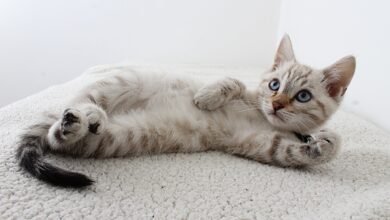Clicks and Treats: The Science Behind Positive Reinforcement for Pet Cats

Positive reinforcement is more than just a training technique; it’s a science that taps into the psychology of our feline friends. In the world of cat training, the combination of clicks and treats forms a powerful duo that not only teaches new tricks but also strengthens the bond between cats and their owners.
2. Understanding Cat Behavior
Cats, with their unique behaviors and independent nature, require a nuanced approach to training. Positive reinforcement aligns seamlessly with feline psychology. Unlike dogs, cats respond more favorably to rewards and positive stimuli, making it an ideal method for training and behavior modification.
3. The Clicker as a Precision Tool
At the heart of positive reinforcement lies the clicker—a precision tool that communicates precisely when your cat exhibits the desired behavior. The distinct sound of the clicker serves as an immediate and clear signal, marking the exact moment your cat has performed correctly. This precision enhances communication during training sessions.
4. The Science Behind Treats and Rewards
The use of treats in positive reinforcement triggers a neurological response in cats. When a cat receives a treat as a reward, it activates the pleasure centers in their brain. This release of pleasure-inducing neurotransmitters reinforces the connection between the behavior and the positive experience, making them more likely to repeat the desired action.
5. Types of Treats for Positive Reinforcement
Not all treats are created equal. When choosing treats for positive reinforcement, consider nutritional value. High-value treats, reserved for exceptional behavior, provide extra motivation. Low-value treats, suitable for more routine actions, maintain engagement without risking overindulgence.
6. Establishing the Link Between Clicks and Treats
Timing is crucial in positive reinforcement. The clicker’s distinct sound must be immediately followed by a treat to create a strong association in your cat’s mind. This linking of clicks and treats reinforces the positive behavior, forming the basis of effective positive reinforcement training.
7. The Psychology of Reward-Based Training
Positive reinforcement taps into the reward center of a cat’s brain. When a cat associates a behavior with a positive outcome, such as receiving a treat, it releases neurotransmitters like dopamine. This creates a positive emotional experience, strengthening the connection between the behavior and the reward.
8. Common Mistakes in Positive Reinforcement
While positive reinforcement is powerful, common mistakes can hinder its effectiveness. Overusing treats or failing to maintain consistency in rewarding desired behavior can lead to confusion. It’s crucial to strike a balance and use positive reinforcement judiciously.
9. Positive Reinforcement for Behavioral Modification
Positive reinforcement isn’t just for teaching tricks; it’s a valuable tool for addressing behavioral issues. By reinforcing alternative positive behaviors, you can redirect your cat away from undesirable actions, creating a positive and cooperative environment.
10. The Role of Clicker Training in Bonding
Clicker training goes beyond teaching tricks; it strengthens the bond between cat and owner. Positive interactions, shared learning experiences, and the trust built during training contribute to a deeper emotional connection between you and your feline companion.
11. The Art of Mixing Clicks and Affection
In addition to clicks and treats, verbal praise and affection play a vital role in positive reinforcement. Balancing these elements creates a holistic training experience, enhancing the emotional connection between you and your cat.
12. Positive Reinforcement for Kittens
Starting positive reinforcement early is key for kittens. Tailor your approach to the age and developmental stage of your cat. Early training has a lasting impact on behavior, setting a foundation for positive interactions throughout their life.
13. Building a Positive Environment
Creating a positive training environment goes hand in hand with positive reinforcement. Minimize stressors, provide a comfortable space, and ensure a conducive atmosphere for learning. A positive environment enhances the effectiveness of your training efforts.
14. Measuring Success in Positive Reinforcement
Setting realistic goals for each training session is essential. Celebrate small victories and assess overall progress regularly. Recognizing and acknowledging success keeps both you and your cat motivated throughout the training journey.
15. Conclusion
In conclusion, the art of positive reinforcement, with clicks and treats as its pillars, is a powerful and science-backed method for cat training. By understanding the intricacies of feline behavior and employing precise tools like the clicker, you can create a positive and enriching training experience that strengthens the bond between you and your cat.




